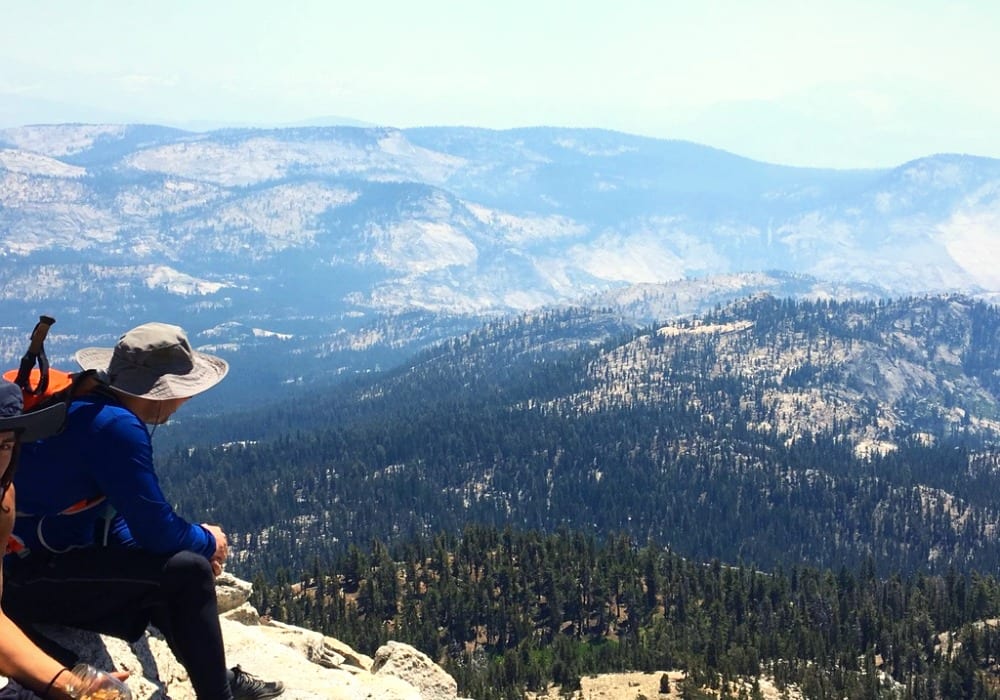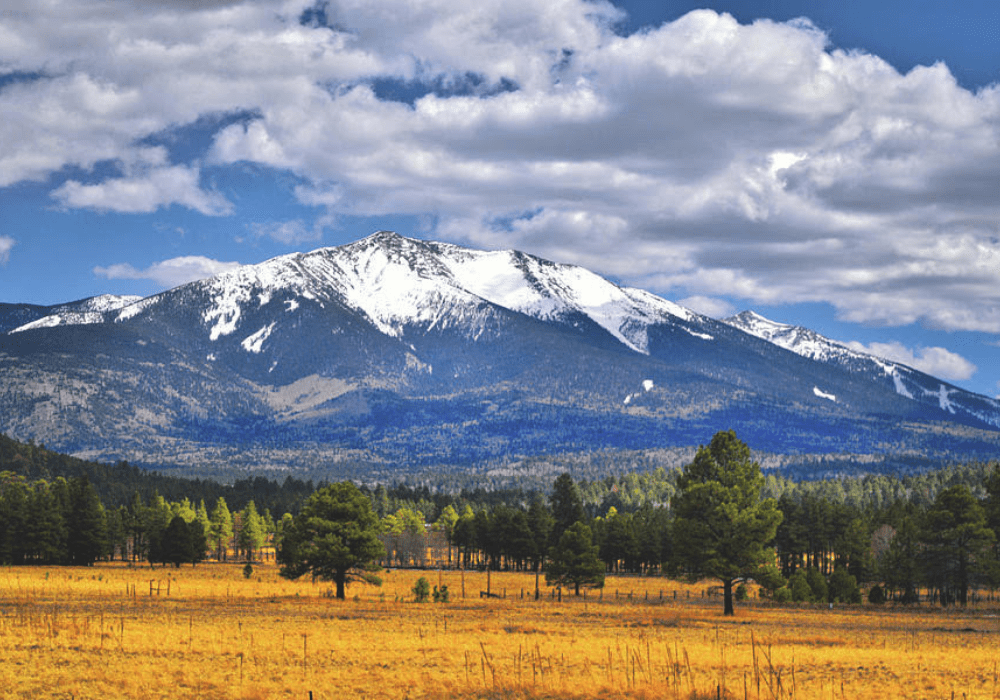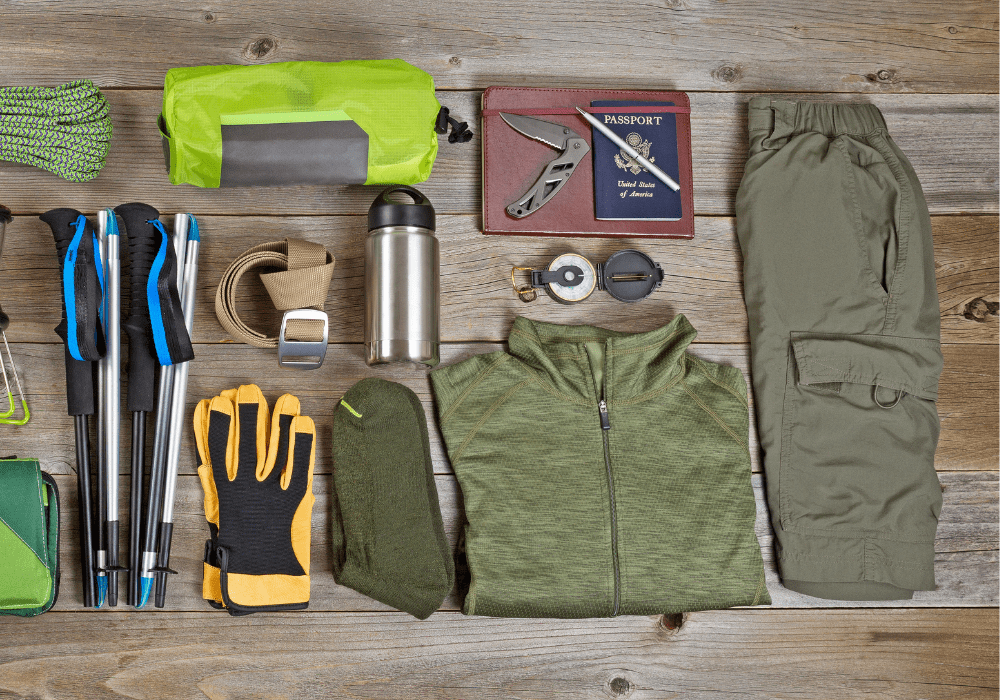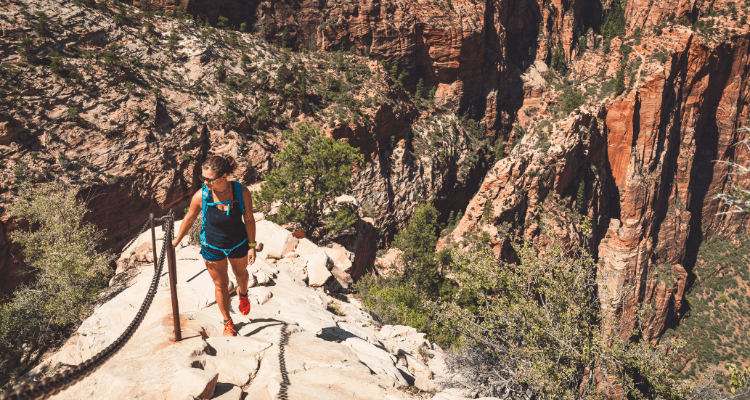
Nine Critical Day Hike Essentials
Estimated reading time: 8 minutes
There are nine critical day hike essentials every adventurer should keep with them.
Hiking is one of the best ways to enjoy nature and get in some good old exercise and keep your body in shape. Every year more and more people are getting into this great activity that can be shared with friends or family.
Many people also use hiking as a way to make new friends and socialize with hiking groups.
When you are going on a long hike, though, you should be well prepared, especially in winter and summer months when the weather is extreme.
Related: 18 Ways To Get Into Hiking – All Your Questions Answered
Table of Contents
Be prepared with these Day Hike Essentials
We have made a definitive list of day hike essentials. Everything you need to take with you for for your safety and basic comfort. With this list you can head out without worrying that you may have forgotten something and, best of all, you will be prepared for all weather conditions and for anything that could happen.
Read on!
1. Carrying Items
PURPOSE: Carrying all of your stuff into and out of the wilderness.
ESSENTIAL ITEM?: Yes
PRICE RANGE: $170-$500
LOOK FOR: Ultralight packs typically weigh no more than 2.5 lbs.
OUR PICK: Osprey Exos 48
LEARN MORE: Hiking Backpacks 101
One of the most important accessories for hikers is a good, reliable backpack that is comfortable and that fits everything you need. The rucksack should fit perfectly and not strain your shoulders or irritate your arms, and for extreme weather, you will need it to be waterproof or at least have a pack cover prepared should it start to rain. For longer hikes, a day pack may be a better option, as these are made with the comfort of the hiker in mind and have all the compartments and accessories you will need.
2. Clothing Gear For Warm Weather
When heading out to hike in warm weather, it can be tempting to put on as little clothing as possible, but this is not a good idea. As much as you may want to put on a pair of shorts, you should wear trousers to protect yourself from the sun. You can get lightweight, breathable trousers that you won’t even realize you have on, and a lightweight jacket is also important should you want a break from the sun or for the evening when the temperatures start to drop a little. Speaking of sun, a sun hat or cap is an absolute essential, as your face and neck will burn fast without one.
3. Clothing Gear for Cold weather
Hiking is a great winter activity as long as you have the right clothes and accessories to protect your body and keep yourself nice and warm. The exact amount of clothing you need will greatly depend on what kind of temperatures you are going to be hiking in, but the essentials are base-layer trousers, a base-layer shirt, soft-shell trousers and a fleece jacket. If you are hiking somewhere really cold, gloves, scarves and a beanie are also must haves, as well as thermal socks that will help warm your whole body. Lightweight gloves are a great idea even if you are not hiking in extreme cold, as the hands can get very cold very quickly.
4. Clothing Gear for Wet Weather
You don’t have to give up hiking just because it’s a little rainy outside. You can keep up your hobby and keep active with wet weather, just be prepared for it. This means investing in waterproof clothing to keep your body dry and protected from rain. A good waterproof jacket with a hood that protects your head, too, is very important, as are waterproof trousers that will stock your legs getting soaked. Your shoes should also be rainproof and be suitable for walking on slippery surfaces.
5. Footwear
The most important thing of all when hiking is good footwear. First of all, you need footwear that fits your feet like a glove. Badly fitting footwear is terrible for your feet and could cause problems not just during your hike but later on in life, too. Always try before you buy, and never wear brand new shoes for the first time when hiking, as you don’t know if they are going to cause you problems and give you blisters. Try them on in the house first and wear them in.
Depending on what kind of weather you are going to be hiking in, you will want to invest in a quality, sturdy pair of boots, approach shoes or sandals that give plenty of protection and have sturdy bases made for hiking. You should also invest in a good pair of breathable socks that will keep your feet warm in cold weather, and a light pair of socks to protect your feet against the elements during warmer months.
6. Safety and First Aid
We don’t like to think negative, but you have to be prepared for absolutely anything that could happen to you or your hiking buddies during your hike, and prepare everything you can think of that will keep you safe. That means a basic first aid kit is essential, as well as basic survival items like headlamps, matches and a lighter. You can get a ultralight and watertight adventure medical kit that contains all the essentials in a great waterproof pouch that is easy to pop into your rucksack.
If you are hiking with sun, a high SPF sunscreen is essential to avoid burning and sunstroke. Excessive sun exposure whilst hiking is very dangerous and can result in sunstroke and dehydration. Pack a sun hat or cap to protect your face and neck from the sun, and apply cream before heading out and every hour during the hike. A good pair of sunglasses are a must, too, to protect your eyesight and stop you from straining your eyes whilst walking.
7. Hydration
Man can survive without food, but not without water. Staying hydrated whilst hiking is incredibly important, and you could run into problems if you run out of water and don’t have the correct tools on you to get more. A good water bottle that holds plenty of liquid and is comfortable to walk with is an essential before you head out on any hike, and if you are going to be walking somewhere where you could come across natural sources of water, take a water purifier. A water purifier is a great way to ensure you keep hydrated during your hike and that you are drinking safe, clean water.
Something that many regular hikers invest in is a hydration bladder. This is a great and incredibly comfortable way to get your water source while hiking, and it takes a lot of weight off you since you don’t have the bulky water bottle attached to your rucksack. A hydration bladder is basically a big pouch, usually made of rubber or plastic, that is full of water and comes with a tube to drink while you walk. Many hikers love the convenience of these packs and the simplicity of them means you can keep hydrated without constantly stopping to take out your bottle, so you will probably end up drinking more water. They can hold up to 3 liters of water and are also easily refillable.
Here’s an article I wrote about why you’re not really sick, you’re just thirsty.
8. Navigation Tools
This is one that many people forget or think that they simply will not need when going hiking, but they are wrong. Old fashioned navigation tools are super important, since you never know what could happen or where you could end up, or if you take a wrong turning and lose the group and so on. Many people these days rely way too much on smartphones for navigation and communication, but remember, smartphones can lose signal. They can run out of battery. They can suddenly stop working in extreme temperatures. They are far from reliable, and you should never solely rely on your mobile phone when hiking.
Invest in a good map and a compass, and think about packing a whistle to communicate with your fellow hikers should you get lost or should you loose somebody else. The more professional hikers amongst you should also consider investing in a GPS unit. There are tons available from great brands such as Garmin who make their products especially for those biking or hiking.
9. Personal Items
These things are not so essential, but they will make your hike way more enjoyable and more comfortable, depending on your interests and hobbies. If you love to take photos and are into photography, for example, don’t forget your camera. Invest in a good, sturdy case to keep it safe during your hike, and a spare battery should you run out halfway. If you love birdwatching or just want to be able to see things closer from a distance, or check if there is danger or any wildlife on your path, a pair of binoculars can come in very handy whilst hiking and doesn’t weigh a thing to carry in your backpack.
Other things to think about taking are insect repellent to protect yourself against any nasty insects that could bite you during your hike, especially in summer when they are more active. You can get good sprays and creams in pharmacies and in many supermarkets. Don’t forget to put on your watch to keep track of the time, too.
To your adventure!
-David
P.S.
I think you’ll also like our Essential Ultralight Backpacking Gear List





Pingback: Pinnacles National Park - AdventureHacks
Pingback: 9 Things Every Hiker Regrets Not Doing Sooner - AdventureHacks
Pingback: 24 Pro Tips For Hiking In The Rain - Stay Dry & Comfortable - AdventureHacks
Pingback: 10 Tips for How to Protect Yourself from Mosquitoes & Ticks While Hiking - AdventureHacks